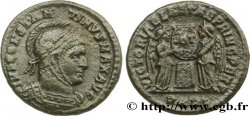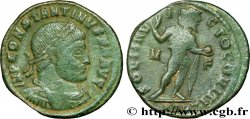Live auction - brm_648048 - CONSTANTINE I THE GREAT Follis ou nummus
You must signin and be an approved bidder to bid, LOGIN TO BID. Accounts are subject to approval and the approval process takes place within 48 hours. Do not wait until the day a sale closes to register. Clicking on "BID" constitutes acceptance of the terms of use of cgb.fr private live auctions.
Bids must be placed in whole Euro amounts only. The sale will start closing at the time stated on the item description; any bids received at the site after the closing time will not be executed. Transmission times may vary and bids could be rejected if you wait until the last second. For further information check the Live auction FAQ
All winning bids are subject to a 18% buyer’s fee.
All winning bids are subject to a 18% buyer’s fee.
| Estimate : | 1 200 € |
| Price : | 600 € |
| Maximum bid : | 650 € |
| End of the sale : | 10 December 2024 14:50:52 |
| bidders : | 1 bidder |
Type : Follis ou nummus
Date: 315
Mint name / Town : Arles
Metal : copper
Diameter : 21 mm
Orientation dies : 12 h.
Weight : 3,34 g.
Rarity : R3
Officine: 4e
Coments on the condition:
Exemplaire sur un flan bien centré à l’usure importante, lisible et identifiable avec un buste exceptionnel. Frappe un peu molle. Patine vert foncé
Obverse
Obverse legend : IMP CONSTANTINVS P F AVG.
Obverse description : Buste lauré, consulaire de Constantin Ier à droite, vu de trois quarts en avant, tenant le scipio de la main droite (H*).
Obverse translation : “Imperator Constantinus Pius Felix Augustus”, (L’empereur Constantin pieux heureux auguste).
Reverse
Reverse legend : SOLI INV-I-CTO COMITI/ S|F// QARL.
Reverse description : Sol (le Soleil) radié à demi nu, le manteau sur l’épaule, debout à droite, tournée à gauche, levant la main droite et tenant un globe de la gauche.
Reverse translation : “Soli Invicto Comiti”, (Au compagnon le Soleil invincible).
Commentary
Un seul exemplaire recensé dans la collection du musée de l’Arles Antique. Rubans de type 3. Buste consulaire avec la toga picta et la toga palmata. C’est le deuxième exemplaire signalé.








 Report a mistake
Report a mistake Print the page
Print the page Share my selection
Share my selection Ask a question
Ask a question Consign / sell
Consign / sell
 Full data
Full data














